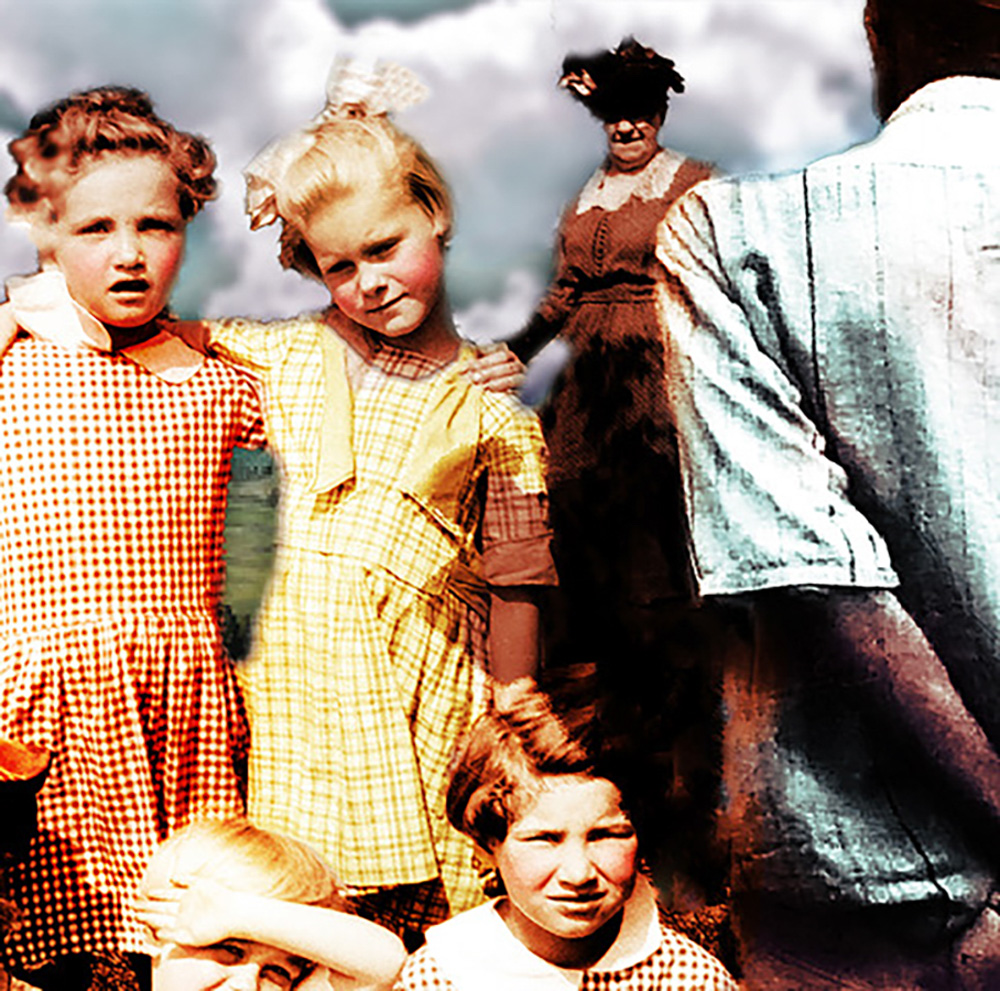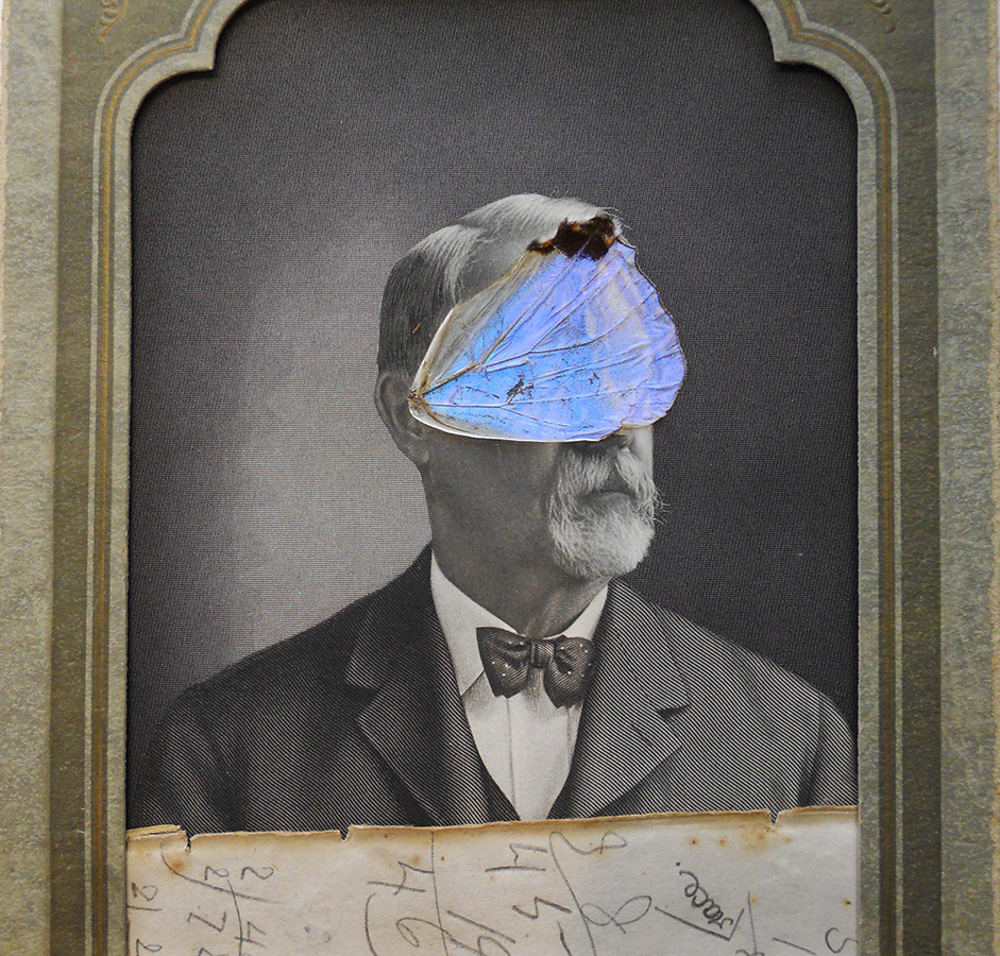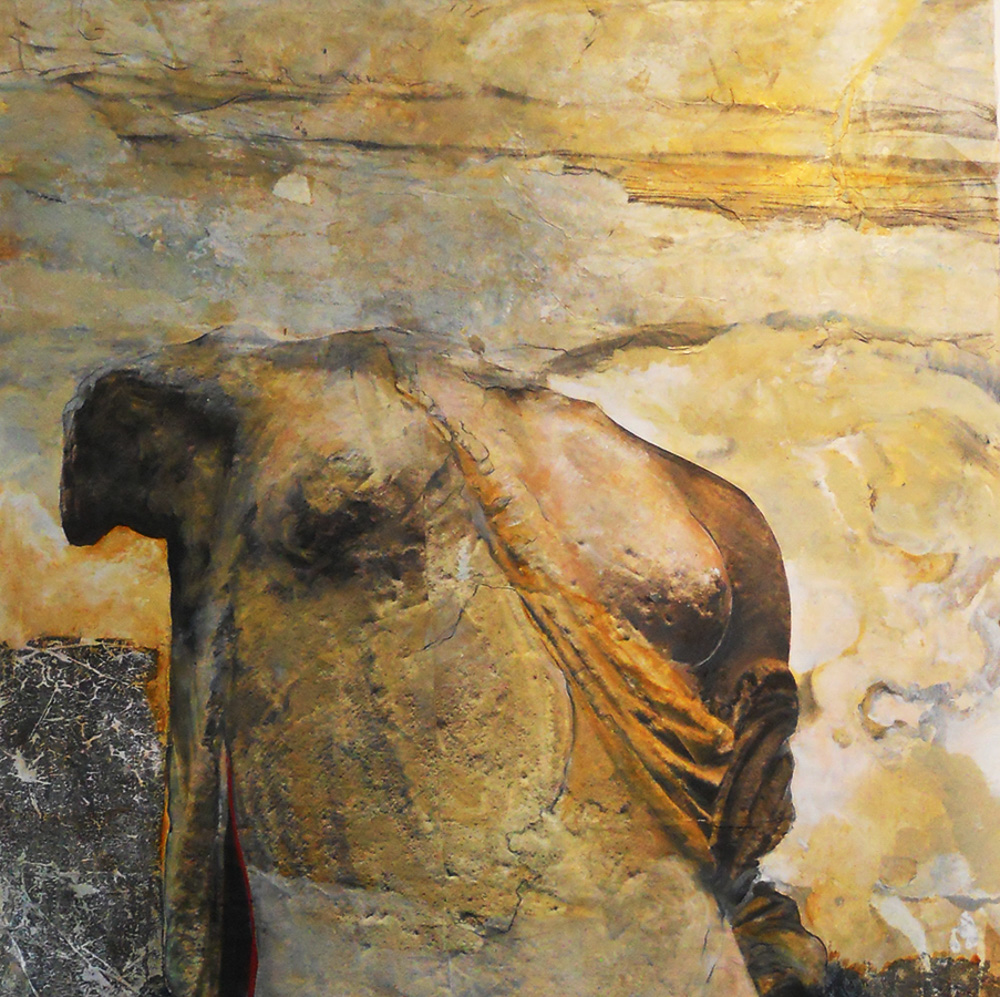‘Cut and Paste’ at The Arts Fund
Dug Uyesaka Curates a Retrospective of Santa Barbara Collage Artists

Thanks in part to the talented and inspirational artist/teacher William Dole, Santa Barbara has long been home to a vibrant and sophisticated school of artists who work in collage. In this excellent and informative exhibit, curator Dug Uyesaka, himself a fine practitioner of collage/assemblage, has put together nine of the best Santa Barbara artists to have worked in this medium over the last four decades. William Dole, R. Anthony Askew, Mary Heebner, William Davies King, Susan Owens, Angela Holland, Sue Van Horsen, Susan Tibbles, and Kate Doordan Klavan occupy a wide range of positions within the vast field laid out by the term “collage,” but within it they share several qualities that link them in a coherent tradition.
First, there’s the Dole influence, which is “less a style than a way of working,” to quote the man himself. To achieve that way of working requires a lot. One must be blessed with an extreme sensitivity to texture and surface in order to see and feel the image potential of different materials. One has to love and understand the work of photographers, graphic designers, and typographers, and be capable of imagining other people’s whole lives while sifting through scraps of old handwriting and torn remnants of labels, stickers, tickets, and packages. Beyond that, there should be an abiding concern for the environment expressed through a modern aesthetic that’s not wasteful, and work that exemplifies the mantra of reduce, reuse, and recycle.

In the “bibliolage” of King, we find surreal mash-ups such as “Condoleezza Rice: Liberace” (2018), a Condi Rice picture-book biography for young readers that’s now thoroughly infiltrated by paper dolls and bon mots from the famous pianist and fashion icon. In a nod to his academic field, which is theater history, King calls what he does “restaging” books, and the effect is immediately absorbing. Every page in one of these surreal concoctions contains something new and surprising.
Like Askew and Tibbles, Holland creates modernist compositions in which a highly developed sense of aesthetic balance is on display. Her “November Wind” series combines a related set of forms and a carefully chosen limited palette in three imaginative variations. Doordan Klavan positions cutout birds in perspectival spaces drawn from a trove of vintage postcards. In her artist’s statement, Doordan Klavan says that she hopes that her work “calls for a certain kindness,” and this beautiful sentiment is very much in tune with the ethos of the collage scene as a whole.
Heebner’s magnificent “Aphrodite from the Ashes” represents the highest stage in the development of her ravishing and instantly recognizable personal idiom. She produces neoclassical forms in rugged, irresistible textures that gain impact from bold decisions about scale and cropping. It’s always interesting to spend time with her work.

Tibbles and Van Horsen represent two further versions of collage as a “way of working.” For Tibbles, the process is what she calls a “controlled spin” in which she gradually eliminates potential elements until she arrives at a final composition that feels necessary and complete. Her “Bag Man,” a subtly altered engraving of a man with an alligator satchel on his lap and a live alligator around his neck, simply demands to be seen, and you can forget about believing. Van Horsen achieves a similarly powerful impact with digital collages of extreme intensity. Forever traveling between past and present, her images invite the viewer into an eerie state of suspension between the two.
4•1•1
Cut and Paste: Collage in Santa Barbara is on view at The Arts Fund (205 Santa Barbara St.) through January 11. On Saturday, January 5, there will be an artists’ panel discussion at the gallery from 1 to 2 p.m. Call (805) 965-7321 or see artsfundsb.org.



